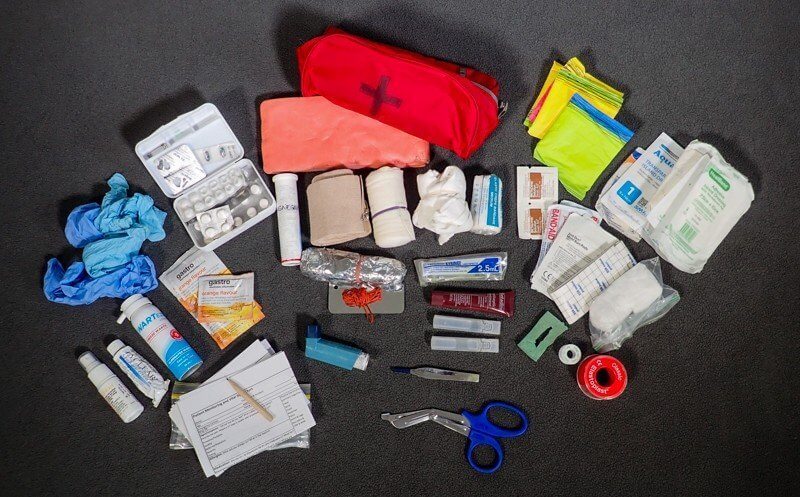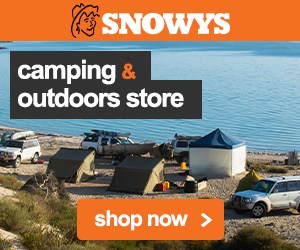
To the uninitiated, you could be forgiven for thinking that all first aid kits are created equal. Just grab one off the shelf at your local chemist or from an outdoors shop (hey, it’s from a gear shop so it should be perfect for outdoor adventures, right?), throw it in your pack and you’re ready to go.
But what does it mean to be ‘initiated’? Here’s some things I’ve learnt along the way having done six Remote Area First Aid or Wilderness First Aid courses over the years, as well as being a commercial bushwalking guide and bushwalking club leader.
There is not one first aid kit to rule them all
The worst examples of pre-made first aid kits I’ve seen have had 5 old band-aids (that have lost their stick), a crepe roller bandage (with the sharp-teeth-elastic-clippy-thing) and an antiseptic wipe. Not much use unless you’ve got a papercut. I think I’d rather pour lemon juice on said cut than have to carry that kit. The best kits I’ve come across are those you build yourself. For simplicity or cost, you might choose to start with a commercial kit as the bags can be useful and then add to/subtract from it to fit your own needs.

Everyone carries their own first aid kit
… And use the owners kit for treating the owner, with yours and everyone elses as backups. This is one of the fundamentals of self-reliance in the bush and is one of the absolute foundations of the clubs I’m in and all my mates that I go bushwalking with. In my mind, unless you’re on a commercially led trip, everyone needs to have their own first aid kit. Sure, it might not be as big as mine as a leader, but there are some basics that everyone should carry. At the very least, these should include:
-
- Snake bandage (1 bandage doesn’t go very far for a leg, so if everyone carries one, then there’s enough to treat a snakebite properly).
-
- Blister prevention and treatment
-
- Medications (pain relief and prescription)
-
- Simple wound care like bandaids
- Triangular bandage

A first aid kit is no substitute for knowledge
A first aid kit without training is like having all the ingredients in the pantry but no idea how to cook. Actually, it’s more like having everything you need for a recipe, but leaving out one crucial ingredient. Without it, your cake won’t rise and your custard will curdle.
What you learn in a remote area or wilderness first aid course will be more valuable than anything inside your kit. In fact, you’ll learn that some life-saving first aid can be done with just your hands.
Keep your knowledge fresh – recert regularly
There’s a reason that first aid qualifications expire after 3 years (and resus after 1 year). Constant refreshers (or recertification) not only keeps you up to date on the latest approved methods (eg. do you bandage up or down a limb for snake bite? Is resus 1 breath:30 compressions or 1:15 or hang on… do we even DO breaths anymore?), but the more you practice relevant scenarios, the more your actions and reactions become automatic, calm and measured. Feel the calm.

Know your kit
If you don’t use your kit, chances are that it sits in your pack and you kinda forget that it’s there… until you need it. Apart from replacing used items or checking for out of date bits, it’s great to be familiar with your kit – how you pack it, where things are – so you can find things when you need to.
Mark it as a first aid kit
So up there with the rule of ‘use a person’s own first aid kit first’, it’s important that people in your group can find your kit when they need to, in case you can’t tell them. If you have a DIY kit (like mine), chances are that it’s not going to have the big red cross on the side or labelled as such. I scribbled on mine and purposefully chose a red kit to help it stand out in my bag.

Get rid of the sharp teeth clippy thing
I reckon there’s been more injuries caused by those little sharp-teeth-clippy-things (that come on crepe or roller bandages) from people accidentally kneeling on them, than times they’ve actually served the purpose to what they were designed. Chuck em out and replace them with some safety pins… much more useful, safe and dual purpose.
Now… down to the nitty-gritty. What’s in my first aid kit? Let me take you inside and also give you a downloadable checklist to print out and use. Just remember, this is my kit and what works for me, for the types of trips I do and my level of comfort/risk. It’s important that you design and develop a kit that is right for you.

Oh and in case you’re wondering, weight for this kit is 1.1kgs. Yep, that’s quite hefty and I could reduce the kit, but for when I’m guiding (especially with kids) I like to have all of this.
Q: What’s in your first aid kit that’s different?










